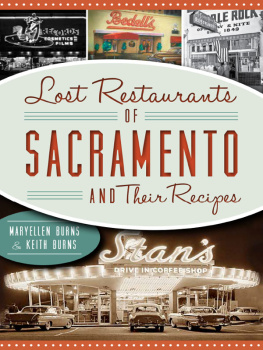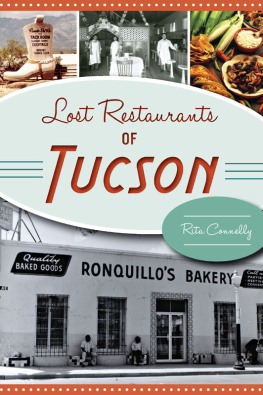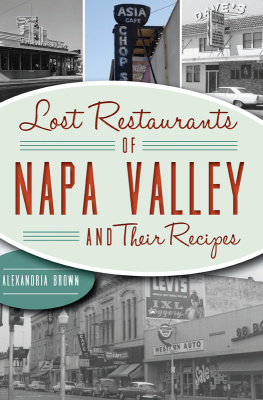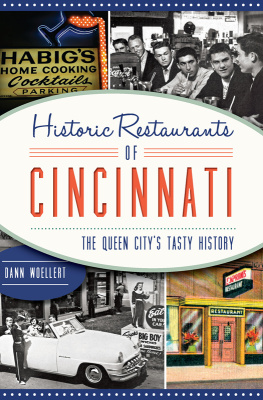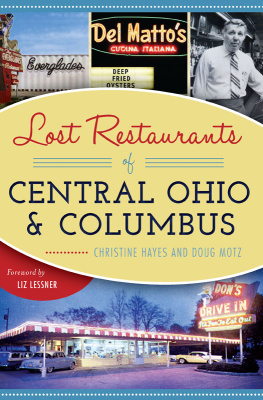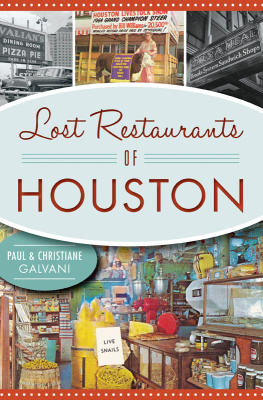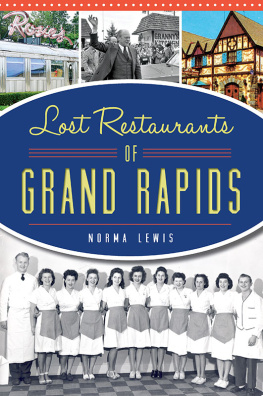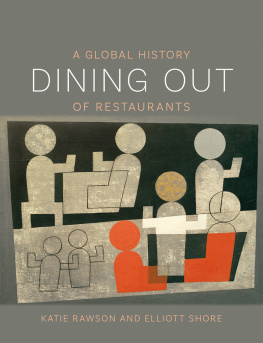


Published by American Palate
A Division of The History Press
Charleston, SC
www.historypress.net
Copyright 2016 by Paul Vachon
All rights reserved
First published 2016
e-book edition 2016
ISBN 978.1.43965.851.2
Library of Congress Control Number: 2016943912
print edition ISBN 978.1.46713.559.7
Notice: The information in this book is true and complete to the best of our knowledge. It is offered without guarantee on the part of the author or The History Press. The author and The History Press disclaim all liability in connection with the use of this book.
All rights reserved. No part of this book may be reproduced or transmitted in any form whatsoever without prior written permission from the publisher except in the case of brief quotations embodied in critical articles and reviews.
To all the restaurateurs who have contributed to Detroits venerable culinary traditionone portion of the colorful mosaic that makes up our great city. And in loving memory of my mother-in-law, Mollie Stoffer (19262015), whose great love for food fueled my curiosity.
Contents
Acknowledgements
As an author, I always feel obliged to first recognize the one person whose help was the most indispensable. My very special thanks go to my editor, Krista Slavicek, whose patience, thoroughness and expert guidance helped me with myriad issues during the past several months.
Just as no restaurant can operate without patrons or staff, no author can assemble a book without sources. Throughout this time-consuming process, Ive been helped by numerous people, those with an intimate knowledge of the Detroits dining sceneboth past and presentand by several librarians, archivists and journalists.
My sincere gratitude goes to Detroit restaurateurs Connie Bacigalupo, Janet Sossi Belcoure, Tom Brady, Tommy Burelle, Grace Keros, Patrick Liebler, Wesley Pikula, Justin Vesper and Joe Vicari.
My thanks also go to Molly Abraham, longtime Detroit restaurant critic; Mark Bowden and the staff of the Burton Historical Collection of the Detroit Public Library; Richard Bulleri; Stephanie Angelyn Casola of Franco Public Relations; Elizabeth Murray Clemens and Mary Wallace of the Walter P. Reuther Library of Urban and Labor Affairs at Wayne State University; Michael Hauser; Michael Jackman of the Detroit Metro Times; Charlie Langton of WJBK-TV, Fox 2; Arnold and Shirley Silverman; and my cousins Lynn, Marshall and Scott Shencopp.
My deep appreciation goes to my wife, Sheryl, and to our son, Evan, for providing me with interesting ideas, lending their support and offering me encouragement in my occasional moments of frustration.
Thanks are also due to my friends Nancy Hand and Karin Risko, who helped me with obtaining images and directing me to sources.
Introduction
I was at this restaurant. The sign said Breakfast Anytime.
So I ordered French Toast in the Renaissance.
Steven Wright
Time travel aside, Detroits long culinary tradition begins with the contributions of the French and dates almost as far back as the Renaissance. Over the intervening decades and centuries, scores of other ethnic groups have made Detroit home, making their cultures their everlasting legacy to the city.
Style of cuisine represents just one aspect of a given groups contribution. Unique expressions of music and dance, sacred celebrations of holidays and traditional types of dress all underscore the ubiquity of Detroits varied ethnic groups. The migration (and integration) of the population during the postwar years has allowed the greater community to appreciate this diversity. In metro Detroit, you can visit a jazz club featuring African American artists on the west side, take in a museum dedicated to the contributions of Arab Americans in Dearborn or attend a Cinco de Mayo festival in Mexicantown.
But a special pride is reflected in a groups food traditions. Food serves as an intimate window into the culture of a peopleand by extension, an ethnic restaurant represents that cultures outreach to the greater community. For restaurateurs, business has a twofold purpose: providing a livelihood while extending their groups unique hospitality to the public.
Immigration to the Detroit area in recent decades has only added to the assemblage of ethnic groups represented in southeast Michigan, and most, if not all, offer their unique cuisine to the public in their traditional manner. So, in addition to finding French duck charcuterie at Cuisine, Polish kielbasa at the Ivanhoe Caf, German knackwurst at the Dakota Inn Rathskeller, Italian escargots la Bourguignonne at the Roma Caf or authentic Coney dogs at American Coney Island, youll be able to enjoy creations presented by the Vietnamese, Cuban, Indian, Jewish, Ethiopian, Irish, Guatemalan, Greek, Arabic, Chinese and Japanese communitiesto name only a few. In addition, a nucleus of American-style restaurants featuring dishes that are often a fusion of French, German and Italian traditions stand as a mainstay of Detroits dining scene. Some are very upscale, reflecting the wealth brought to the area by the automotive industry.
As the twentieth century progressed, and the restaurant scene in Detroit grew more influential, a few establishments accomplished an especially rare feat and actually invented a food or beverage within their walls. The ubiquitous Coney dog? Its something you can find now at almost any suburban intersection, but it all began with American and Lafayette Coney Island in the heart of downtown, where Michigan Avenue, Lafayette Boulevard and Griswold Street converge. Detroit-style deep-dish pizza owes its origins to the original Buddys at Conant Avenue and Six Mile Road. The interesting concoction of red wine and champagne known as Cold Duck was born at the Pontchartrain Wine Cellars on Larned Street. And the delightfully inebriating beverage known as the Hummera combination of Kahla and rum blended with vanilla ice cream and icewas conceived and first formulated in 1968 by Jerome Adams, a bartender at the Bayview Yacht Club, perched on the banks of the Detroit River.
The ingenuity behind these accomplishments speaks to the originality present in the Detroit area. Often seen as a place responsible only for cars, southeast Michigan is home to many other innovations of culinary creativity. Others include achievements in finance, advertising, medicine and the fine arts.
Yet in Detroit, as in virtually any major American city, the passage of time begets inevitable change. Populations shift, leading to the dissolution of previously homogenous neighborhoods. Consumer tastes change, especially in the media-driven twenty-first century. And independent restaurateurs often discover a lack of interest among their children in taking over the family business. As such, many restaurantssome of which once enjoyed strong followingsclosed their doors as the decades marched on. It can be argued that these winds of change hit Detroit much harder than other American cities. Urban experts have advanced theories, but the most likely candidate might just be the invention that led to the rise of the city: the automobile and the boundless mobility it encouraged.
Success in the restaurant business is a unique challenge requiring special skills that build legacies and create generations of precious memories. In a 2007 article in
Next page


